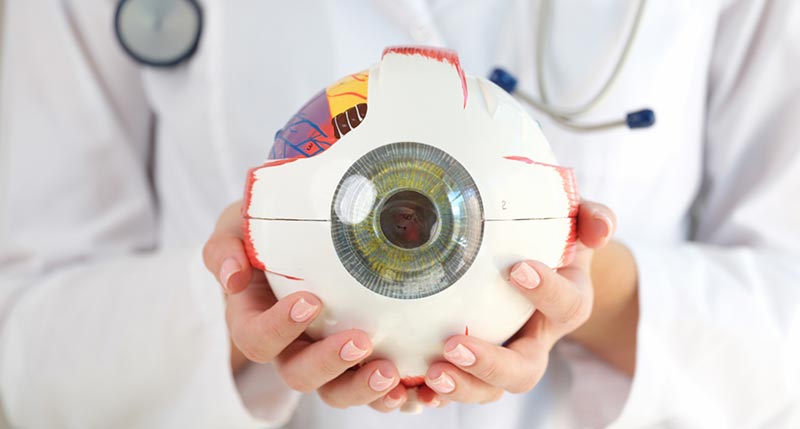The Benefits And Drawbacks of Different Refractive Surgical Procedures for Boosted Eyecare

LASIK Surgery
LASIK surgical procedure is a typically executed refractive treatment that aims to fix vision issues such as astigmatism, farsightedness, and nearsightedness. This medical method has actually gained popularity because of its effectiveness in providing patients with clearer vision and reducing their dependency on glasses or call lenses. Throughout the procedure, a slim flap is produced on the cornea, and a laser is utilized to reshape the underlying cells, correcting the refractive mistake. The flap is then rearranged, permitting fast recovery and very little pain for the person.
One of the key benefits of LASIK surgery is the quick enhancement in vision experienced by lots of people. It is essential for individuals considering LASIK surgery to undergo a comprehensive analysis by an eye care expert to establish if they are suitable candidates for the treatment.
PRK Procedure
The PRK treatment, also known as Photorefractive Keratectomy, is a kind of refractive surgical treatment that aims to correct vision problems similar to LASIK surgery. Unlike LASIK, which entails creating a flap in the cornea, PRK deals with the surface layer of the cornea. During the PRK treatment, the external layer of the cornea, called the epithelium, is gotten rid of to enable reshaping of the underlying corneal cells with an excimer laser. This improving helps to remedy refractive mistakes such as farsightedness, astigmatism, and nearsightedness.
Among the advantages of PRK over LASIK is that it removes the risk of flap-related issues since no flap is created during the surgical procedure. This can be advantageous for people with slim corneas or those associated with contact sports where eye injury is an opportunity. Nevertheless, the recovery time for PRK is typically longer compared to LASIK, as the external layer of the cornea needs time to regrow after the treatment. In spite of the longer healing duration, PRK can be a suitable choice for people seeking vision improvement surgical procedure.
SMILE Surgery
An innovative refractive surgical procedure method obtaining appeal in the area of ophthalmology is SMILE Surgical treatment. Small Incision Lenticule Removal (SMILE) is a minimally intrusive procedure that corrects vision by reshaping the cornea making use of a femtosecond laser. Unlike conventional LASIK surgical treatment, SMILE Surgical procedure entails producing a small incision in the cornea to remove a lenticule, which leads to much less interruption to the corneal structure and potentially faster recovery times.
Among the main advantages of SMILE Surgical procedure is its capacity to treat nearsightedness (nearsightedness) and astigmatism with high accuracy, leading to outstanding aesthetic outcomes for individuals. The minimally intrusive nature of the procedure also reduces the danger of difficulties such as completely click reference dry eye disorder, making it a positive choice for people seeking refractive surgical treatment.

LASEK Strategy
Having actually checked out the advantages and factors to consider of SMILE Surgery, an additional notable refractive surgical treatment strategy worth examining is the LASEK Method. LASEK, which means Laser-Assisted Subepithelial Keratectomy, is a kind of laser eye surgical treatment that aims to correct refractive mistakes such as nearsightedness (nearsightedness), hyperopia (farsightedness), and astigmatism.
Unlike LASIK, LASEK does not entail creating a corneal flap. Instead, throughout a LASEK treatment, the surgeon makes use of a watered down alcohol service to loosen the slim outer layer of the cornea, known as the epithelium.
Among the main benefits of LASEK is that it can be appropriate for individuals with slim corneas who may not be good candidates for LASIK. In addition, LASEK commonly causes minimal post-operative pain and a quicker recovery time compared to PRK. Nevertheless, the aesthetic recovery procedure with LASEK may be a little longer than with LASIK.
Implantable Contact Lenses
Implantable Contact Lenses use a lasting vision correction service for people seeking a choice to standard contact lenses or glasses. These lenses, additionally recognized as phakic intraocular lenses, are operatively put into the eye to deal with refractive mistakes such as myopia (nearsightedness), hyperopia (farsightedness), and astigmatism. eye doctors in andalusia. Unlike standard call lenses that remain on the surface area of the eye, implantable contact lenses work within the eye itself, providing clear vision without the need for daily upkeep or elimination
One of the essential benefits of implantable call lenses is their durability. Once placed, they can stay in more information the eye forever, offering regular and stable vision adjustment. Furthermore, these lenses can be an excellent option for individuals who are bad candidates for laser eye surgical procedure or who prefer a relatively easy to fix vision correction procedure.
Nonetheless, implantable contact lenses do carry some risks, including the possibility for cataracts or enhanced eye stress. It is vital for people considering this alternative to speak with an eye link care specialist to establish if implantable contact lenses are the best option for their certain requirements and eye health and wellness.
Final Thought
Finally, each kind of refractive surgical procedure has its own benefits and negative aspects. LASIK surgical treatment is preferred for its quick recuperation time, while PRK procedure might appropriate for patients with slim corneas. SMILE surgery provides minimal discomfort during the procedure, but LASEK technique might have a longer healing procedure. Implantable contact lenses give a choice for those that are not ideal candidates for standard surgical treatments. Individuals must seek advice from their eye care supplier to figure out the very best choice for their individual demands.

On The Whole, SMILE Surgery provides a promising alternative for people looking to boost their vision via refractive surgical treatment.